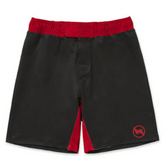Can a Dirty or Low-Quality BJJ Gi Cause Skin Infections?
In the fast-paced and contact-heavy world of Brazilian Jiu-Jitsu (BJJ), maintaining hygiene is not just a matter of personal comfort. But it is a vital component of health, safety and longevity in the sport. One of the most overlooked but critical aspects of BJJ hygiene is the cleanliness and quality of the Gi. It does not matter whether you are a beginner stepping into your first class or a seasoned black belt grinding through competitions. Understanding how a dirty or low-quality BJJ Gi can cause skin infections is essential for every practitioner.
In this comprehensive article, we will dive deep into the dangers of using an unclean or poorly made Gi. Moreover, we will explore the types of skin infections BJJ athletes are prone to and how to prevent these potentially career-threatening issues. We will also explain how a high-quality, well-maintained Gi contributes to performance and health in Brazilian Jiu-Jitsu.
Why Hygiene Matters in Brazilian Jiu-Jitsu
BJJ is an intense, full-contact martial art. It involves close body-to-body grappling. This naturally creates a breeding ground for bacteria, fungi and viruses to transfer from one body to another. Your BJJ Gi—the thick, traditional uniform worn during Gi training—is not just a tool of the sport. But it is also a fabric barrier between you and your opponent. If it is not clean or is made of poor-quality materials that trap bacteria, it becomes a risk rather than a defense.
What Makes a Gi “Dirty” or “Low-Quality”?
Let’s distinguish between a dirty Gi and a low-quality one:
1- Dirty BJJ Gi:
A Gi that has not been washed after training, or one that is stored improperly. For instance, a gi left in a gym bag overnight quickly becomes a hotspot for bacterial and fungal growth. Sweat, dead skin and blood can get trapped in the fabric, and over time, the Gi can start to smell musty and look discolored.
2- Low-Quality BJJ Gi:
A low-quality Gi is usually made from inferior fabric. Such fabric lacks proper breathability and antimicrobial treatment. These Gis tend to retain moisture and sweat for longer periods. Thus, creating ideal conditions for bacteria and fungus to thrive. They may also shrink, tear or fray. Hence, leading to cuts or abrasions that increase infection risk.
Skin Infections Caused by a Dirty or Low-Quality Gi
Here are some of the most common skin infections associated with unclean or substandard Gis in BJJ:
1- Ringworm (Tinea Corporis)
This is one of the most notorious infections in Brazilian Jiu-Jitsu. It is a fungal infection. It spreads through skin-to-skin contact and contaminated surfaces—including dirty Gis. A low-quality or sweat-soaked Gi that is not properly washed can easily harbor ringworm spores. Hence, leading to itchy, red, circular rashes.
2- Staph Infection (Including MRSA)
Staphylococcus aureus bacteria are everywhere. But when they enter the body through cuts or abrasions, they can cause painful, pus-filled boils or worse. MRSA (Methicillin-resistant Staphylococcus aureus) is a dangerous and antibiotic-resistant strain. It has sidelined many BJJ athletes. A dirty Gi with accumulated grime and bacteria is a significant risk factor.
3- Impetigo
This highly contagious bacterial infection causes red sores that can burst and form yellowish crusts. A Gi that has not been properly sanitized after previous use can carry bacteria from previous training partners. Hence, spreading impetigo from person to person.
4- Folliculitis
This condition involves inflammation of the hair follicles, often caused by bacterial or fungal infections. Sweaty, unclean Gis—especially those made from poor materials that don’t allow airflow—create the perfect environment for folliculitis to occur.
Health Risks Beyond the Skin
While most of these infections start on the skin, they can become systemic if left untreated. An untreated MRSA infection, for instance, can spread to the bloodstream and become life-threatening. That is why prevention—starting with clean, high-quality BJJ gear—is paramount.
How Low-Quality Gis Contribute to These Infections
Low-grade BJJ Gis usually have poor stitching, lower GSM (grams per square meter) fabric density and inferior materials. Hence, they do not hold up to repeated washing. These features not only decrease durability but also increase the risk of:
- Bacterial retention due to poor weave structure.
- Tearing and skin abrasions, creating open wounds.
- Excessive shrinkage, leading to tighter fits and more skin friction.
- Sweat saturation, keeping the Gi wet longer and aiding microbial growth.
Athletes often buy cheap Gis to save money. But the hidden cost comes in the form of potential doctor visits, antibiotic treatments, missed training sessions and possibly even forced retirement from competition.
The Role of a High-Quality BJJ Gi
Investing in a best BJJ Gi not only boosts your performance but also protects your health. High-quality Gis are typically made with pre-shrunk, antimicrobial fabrics. Such fabrics wick moisture and inhibit bacterial growth. Brands that focus on athlete safety often use pearl weave or gold weave fabrics with tighter knits and better ventilation.
A well-made Gi:
- Washes and dries easily, allowing for better hygiene maintenance.
- Resists bacterial buildup, especially when treated with antimicrobial finishes.
- Reduces skin irritation due to smooth, reinforced seams and high-grade cotton.
- Fits well, reducing excess rubbing and friction.
Best Practices for Gi Hygiene in Brazilian Jiu-Jitsu
It does not matter if you are using a high-end Gi or a budget-friendly option. The following tips are crucial to maintaining hygiene:
- Wash your Gi immediately after training.
- Use hot water and antimicrobial detergent when washing.
- Dry it thoroughly—avoid storing it damp.
- Have multiple Gis to rotate between classes.
- Inspect regularly for tears or mildew smells—these are red flags.
- Avoid using fabric softener, which can weaken the fibers and trap bacteria.
Guide > Tips for Maintaining a Pristine, Clean Jiu-Jitsu Gi
Final Thoughts: Don’t Let a Gi End Your BJJ Journey
BJJ is a rewarding discipline. But it demands discipline off the mats as well. A dirty or low-quality BJJ Gi is not just a minor inconvenience. But it is a direct threat to your skin, health and potentially your Jiu-Jitsu career. From ringworm to MRSA, the dangers of neglecting Gi hygiene are real and documented across gyms and academies worldwide.
Protect yourself by investing in a high-quality BJJ Gi and maintaining a strict cleaning routine. Your skin—and your long-term future in Brazilian Jiu-Jitsu—will thank you.
Guide > Why Clean BJJ Mats Matter: Safety, Hygiene, and Quality





